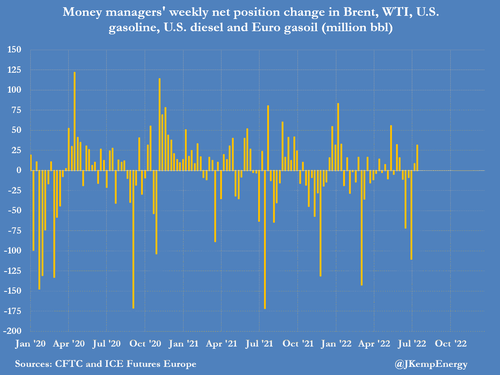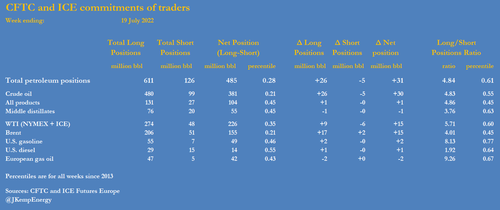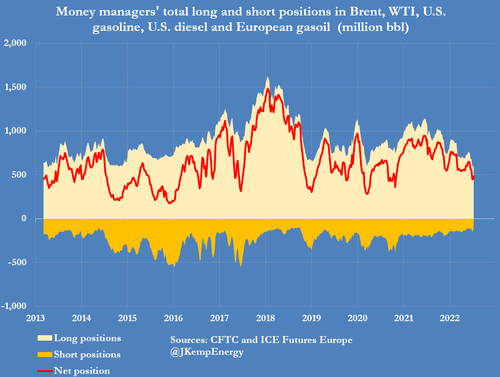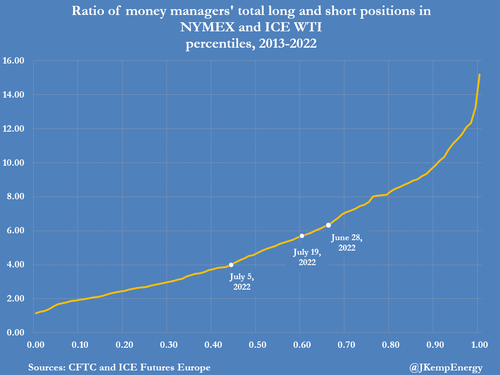With the price of oil still stuck in a bizarre jekyll and hyde standoff, where despite soaring physical demand futures prices have been sliding on expectations of an imminent recession setting up an inevitable collision between the two polar opposite camps, some are speculating that oil prices may be finally reaching a bottom.
According to Bloomberg, short positions in the top oil stock exchange traded fund, the USO, have tumbled 14% in the last 30 days. Such aggressive covering by mostly retail investors may indicate that traders see an end to the rout that has dragged oil prices down by more than 20% since mid-June despite consistently strong physical demand. That said, there is no consensus on what’s ahead: while some see a tight market and optimism a US recession will be shallow, others point to a grim demand outlook and robust supply growth.
Meanwhile, as Reuters energy analyst John Kemp writes, after weeks of selling, bargain-hunting hedge funds are also starting to boost oil positions. Indeed, in the latest week, portfolio investors purchased oil futures and options for the second week running as at least some fund managers concluded that expectations of a recession and a recent sell-off were overdone.
Hedge funds and other money managers purchased the equivalent of 31 million barrels in the six most important petroleum futures and options contracts in the week ending on July 19.
Buying was heavily weighted towards the initiation of new bullish long positions (+26 million barrels) rather than liquidation of existing bearish shorts (-5 million).
It was focused on crude rather than products with purchases of both Brent (+15 million barrels) and NYMEX and ICE WTI (+15 million). There were only minor adjustments in U.S. gasoline (+2 million barrels), U.S. diesel (+1 million) and European gas oil (-3 million).
Even after the buying, the net position across all six contracts is relatively low at just 485 million barrels (28th percentile for all weeks since 2013). Crude positions are especially low at just 381 million barrels (21st percentile).
Relatively bearish positioning, combined with the retreat in prices that set in after the middle of June, has improved the risk-reward ratio and encouraged at least some investors to re-enter the market to profit from any rebound.




